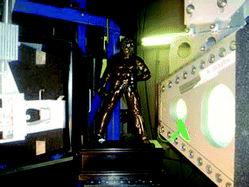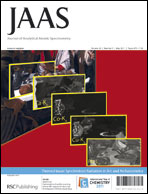Casting technology of Renaissance bronze statuettes: the use of TOF-neutron diffraction for studying afterwork of Renaissance casting techniques
Abstract
The finishing techniques of Renaissance bronze statuettes of the Rijksmuseum Amsterdam were examined using Time of Flight

- This article is part of the themed collection: Synchrotron Radiation in Art and Archaeology

 Please wait while we load your content...
Please wait while we load your content...